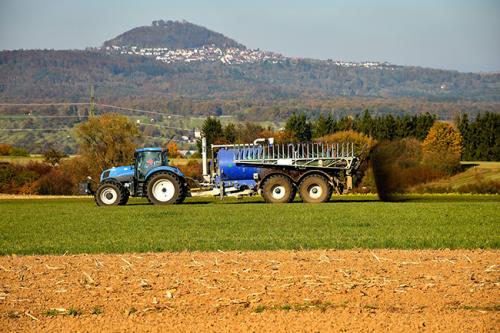Food & Farming
The agricultural sector is a major contributor to greenhouse gases (CO₂, N₂O, CH₄) and air pollutants (NH₃, CH₄, PM). Unlike other industries, emissions from agriculture have remained stable or even increased in recent decades. One reason is that emissions from agriculture have been—and still are—less regulated than those from other sectors. This presents substantial potential for improvements in both the short and long term.
Reducing emissions in the long term requires a transformation of agriculture, including a substantial reduction in livestock numbers, especially in areas with high animal density. This, in turn, implies decreased consumption of animal-based foods. A "less and better" strategy for livestock farming and consumption should be applied to reduce greenhouse gas and nitrogen emissions from animal husbandry and drastically decrease the agricultural land used for animal feed in the EU and abroad. This also involves significantly reducing the use of synthetic fertilizers.
Beyond emission reductions, agriculture should contribute to significantly increasing carbon sequestration. This can be achieved by protecting and restoring peatlands and natural grasslands, changing agricultural practices, and investing in agroforestry.
The dominant narrative in recent decades, which has guided the design of the EU's agricultural policy, can be summarized as "feed the world." This perspective focuses on the quantity of food and calories produced, treating food solely as a commodity. Efforts to minimize social, health, or ecological costs are considered but are seen as less important than the goal of increasing food production. A somewhat different approach, with more focus on sustainability, was evident in the "Farm to Fork" strategy introduced in 2020. However, recent increases in input and food prices, due to the war in Ukraine, have unfortunately shifted the debate back to focusing on production.











